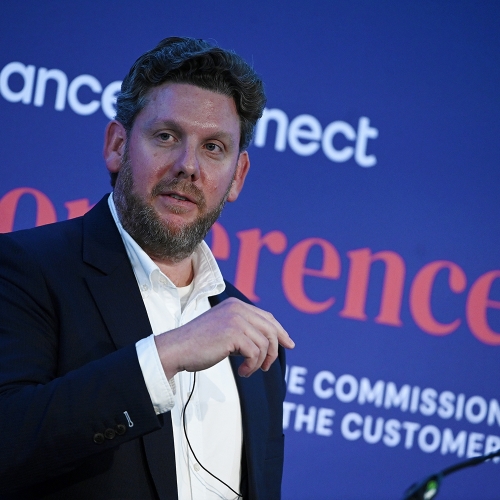Summary
Pandemic disruption underlined the need for the asset finance sector to be agile and reactive, and lenders who built strong bonds with their customers and vendor partners have reaped the benefits. Now the industry needs to adopt the same approach to deal with the challenges presented by the sustainability agenda, according to Jochen Jehmlich, CEO at Société Generale Equipment Finance (SGEF).
Speaking at an Asset Finance Connect Senior Executives Fireside Chat, sponsored by Solifi, Jehmlich predicted a potential “golden age for asset finance to come”, pointing out that the urgent pressure for businesses and the whole economy to adopt climate-friendly ways of operating means that all assets will need to become greener.
“Countries and governments have committed to reducing CO² emissions dramatically over the next few years. That means the whole economy has to run on electricity or hydrogen. It’s not about whether as lenders we should fund only solar panels or wind turbines—it’s about exchanging all assets for greener options.
“In areas like vehicle fleets and commercial equipment, everything will need to be replaced”
Jochen Jehmlich
Covid-19
“We were proactively seeking a joint way forward. You build good customer relations in the bad times, and not the good times,” he noted.
Jehmlich also pointed out that, with offices shut overnight and overseas travel on hold, digital transformation had happened at a much faster pace than previously anticipated. Within a month, all employees were working virtually, and digital technology became a lifeline.
“Suddenly it was possible to sign a contract from home and all the hurdles the legal department had raised before were pushed aside. We have made a jump forwards in terms of digital working”
Sustainability
The focus on ESG issues at both organisational and country level is proving to be an equally disruptive event, as is already evident in the auto industry. There is also pressure from governments who are linking funding subsidies to investment in green technologies and approaches.
“There is a clear understanding that there is a connection between global warming and CO² emissions, and countries and governments have committed themselves to reduce CO² dramatically. It’s not that all our assets we finance today will get greener – they all have basically to be exchanged. All these replacements have to be financed, and we should be in a position to catch some of it,” Jehmlich stated.
SGEF, as part of a big multinational group, has already made a tranche of sustainability commitments, including dropping out of financing anything related to coal, withdrawing financing for oil and reducing and eventually ending lending for certain forms of gas.
“But we are not converting into NGOs – we are still profit driven organizations with a decent return on equity targets. We don’t want to end up with stranded assets or equipment with no value, but the question is how we make money with solutions that are attractive to our customers,” Jehmlich said.
Residual values
One key issue is identifying and managing the risks in financing a new generation of assets based on constantly evolving technologies. ‘We can see this already, for example with electric buses for communities. They are used to the idea there is an open residual and they give the bus back after a while. Whilst we would have been prepared in the past to take it, or the manufacturer would take it, nowadays nobody wants to take it because a bus can run for eight years. Nobody knows how the battery life cycle will look in eight years,” Jehmlich pointed out.
While the auto industry has been the first to experience complete disruption as a result of new technologies, Jehmlich forecast that other sectors will also undergo a revolution. For example, as pressure grows for agriculture to focus less on meat production and more on plant-based production, that could see the introduction of new types of equipment, perhaps smaller assets which target specific activities.
“So, we look for new [green] assets, try to find solutions to finance them, and try to integrate subsidies,”
Jochen Jehmlich
Pay per use
One option is the growing interests in “pay per use” equipment deals, priced on a consumption basis. This requires the traditional approach to calculating residual values and pricing risk in contracts to change.
“We are talking about the circular economy, where the lender funds a new asset which the manufacturer subsequently refurbishes for a second life as a used asset, and which at the end of its life is broken down into parts which are re-used. But no one will jump into this new environment without thinking carefully about which risks they will take,” Jehmlich explained.
Currently, the second life value for a solar panel, for example, is unknown. But while electric assets are likely to be more expensive at the beginning of their life, the maintenance and running costs are potentially lower, suggesting they may have a longer life.
“That opens up the way for lenders and manufacturers to build a long term relationship with the customer and to sell lots of services, for example, updating services,’ Jehmlich said.
However, he cautioned that the uncertainties over who will take the risk over the life of the asset mean a true “pay per use” solution was some way in the future. Currently it is limited to certain areas, such as photocopiers, where there is a high volume of customers sharing one piece of equipment and where levels of usage are reasonably predictable. Nevertheless, such deals have to take account of not only the credit risk if the customer defaults, but also utilization risk, for example if there are problems in a particular industry sector so that turnover falls or customers desert that particular company.
But Jehmlich closed the session with a glimpse of the future possibilities. SGEF is working with Philips on a project which will see the medical equipment supplier take over the whole operation of a clinic for a 10-year period. The customer will pay monthly instalments, and the supplier will take care of the equipment and ensure the technology is upgraded as required.
He also put the asset finance sector on notice that change is inevitable. “I’m always astonished when at a leasing conference, how much less talking there is about the digitialization of the asset finance industry. If you compare that would other parts of the universal banks, there complete areas have been completely disrupted. And banks have been expelled from some areas. So we have to be aware that once in a while, there could be a disrupter coming in showing us a much simpler form of the industry, one we can’t imagine right now. Compared to the whole banking industry, business leasing and asset finance is quite a conservative part that goes very slowly, but that must not be the case in the future.”






